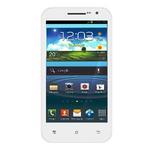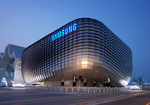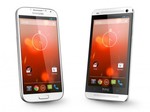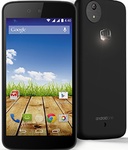Do you still remember these PC Ports - Android
Modern computers, especially slim notebooks have far fewer ports compared to their predecessors from the last couple of decades. We enjoy this often overlooked...
The post Do you still remember these PC Ports? appeared first on YugaTech | Philippines Tech News & Reviews.
Modern computers, especially slim notebooks have far fewer ports compared to their predecessors from the last couple of decades. We enjoy this often overlooked luxury thanks to multi-purpose standards such as USB and Thunderbolt, as well as different forms of wireless connectivity such as Wi-Fi and Bluetooth.
However, things weren’t always this way, as computers used to have a multitude of ports that were often served single purposes. If you’re above a certain age, there are probably already a few that come to mind. Read on to see if you remember any of these.
Editor’s note: Trypophobia warning! Some images in this article may induce an averse reaction to those with trypophobia. You have been warned. Keep scrolling if this means nothing to you.

PS/2

Long before Bluetooth and USB, keyboards and mice were connected to a computer using a PS/2 port. It’s a circular port containing six pins and was introduced in 1987 as an innovation of the IBM Personal System/2, which is also where it gets its name from.
Computers came with two PS/2 ports, one each for the keyboard and mouse, and were color coded — purple for the keyboard, and green for the mouse. Nowadays though, if you do happen to have modern hardware with a PS/2 port, it’s usually a single port that can support either a keyboard or mouse.
Parallel/LPT

Back then, printers too had their own dedicated port called “LPT” (line printer terminal) or more commonly, “Parellel” port. While other peripherals also used a parallel port, printers were perhaps the most common device to hook it up to. The name “parallel” refers to its ability to send multiple bits of data at a time.
Serial/COM

In contrast to the parallel port, a serial port sends data one bit at a time. While this port was also used for printers in the past, it was also commonly used for other peripherals like modems and barcode scanners.
Game Port/Joystick

Originally introduced on IBM’s Game Control Adapter, the Game Port or Joystick Port is a gamer relic from the 1980s and 1990s. It was used for connecting game controllers such as paddles, joysticks, and joypads, as well as some MIDI devices.
VGA

Prior to the more sophisticated HDMI and DVI ports, we used VGA (Video Graphics Array) to connect a computer to an external display. Like the two previously discussed ports, it used a D-sub connector with two screws on either side. VGA isn’t used much nowadays due to resolution limitations (maximum resolution is 2048 x 1536px @85Hz) and the lack of audio output capability.
DVI

Another display output standard, DVI (Digital Visual Interface) was developed by a group of companies working as the Digital Display Working Group (DDWG) and is the only standard they conceived since being founded.
There are actually two kinds of DVI, namely Single Link DVI and Dual Link DVI. The former supports resolutions up to 1920 x 1200 @60Hz, while the latter can go up to 2560 x 1600 @60Hz. Unlike VGA, DVI is compatible with HDMI, opening the possibility to use an adapter from a DVI output to an HDMI display.
S-Video

Quite a bit older than the two previously mentioned video ports, S-Video was a standard used to output SD (standard definition) video signal to an analog display — typically CRT-based monitors and televisions.
FireWire

Before USB eventually became the world’s wired data transfer standard, Apple had also developed their own called FireWire. They created it in cooperation with Sony and Panasonic among other companies, explaining why a number of older video camcorders came with FireWire ports.
The most recent version, FireWire 800, boasted speeds of up to 800Mbps — much faster than USB 2.0’s 480Mbps. Its use inevitably declined with the rise of the much faster USB 3.0. Like its spiritual successor Thunderbolt, it also allowed for daisy chaining of several compatible devices.
eSATA

Modern external hard drives with their USB 3.1 and even Thunderbolt 3 connectivity are way ahead of their predecessor, eSATA. In terms of data transfer speed, it’s no slouch, with the current version being faster than even USB 3.0.
End!
To the titos and titas out there, I hope you enjoyed this trip down memory lane filled with glimpses of beige computer hardware, mice with balls inside them, and dial-up modems. And to the youngsters like me, let’s take a moment to appreciate all of our sophisticated modern I/O, and the fact that our parents had to deal with so many damn ports!
The post Do you still remember these PC Ports? appeared first on YugaTech | Philippines Tech News & Reviews.
24/07/2020 04:49 PM
realme C11 Shopee launch sale a sold-out success!
24/07/2020 02:19 PM
Dry clean at home with the Samsung AirDresser
24/07/2020 07:32 AM
AP to equip all visual journalists globally with Sony cameras
24/07/2020 06:06 AM
SSS claims, benefits can now be received via PayMaya
24/07/2020 01:25 AM
Realme C11 Priced at P4,990 in PH with MediaTek Helio G35 Gaming Processor
24/07/2020 07:14 PM
PayMaya launches Bizkarte Program
24/07/2020 10:47 AM
First impressions - realme C11
24/07/2020 06:51 AM
- HEALTH
- Comics
- Libraries & Demo
- Sports Games
- Racing
- Photography
- Transportation
- Media & Video
- Sports
- Health & Fitness
- Weather
- Medical
- Cards & Casino
- Arcade & Action
- Personalization
- Social
- Communication
- Productivity
- Casual
- Shopping
- Tools
- Brain & Puzzle
- Business
- News & Magazines
- Finance
- Lifestyle
- Music & Audio
- Entertainment
- Travel & Local
- Books & Reference
- Education








